When it comes to veggies, how you cook them matters just as much as eating them in the first place. While some popular kitchen techniques can drain their nutrients, color, and flavor, others preserve their goodness and even boost their benefits. If you’ve ever wondered why your broccoli turns mushy or your carrots lose their sweetness, your cooking method might be to blame. In this guide, we’re breaking down five common ways you might be sabotaging your vegetables—and five smart techniques that treat them right. Because veggies deserve better than a boiling pot and a blast of scorching heat.
1. AVOID: Boiling
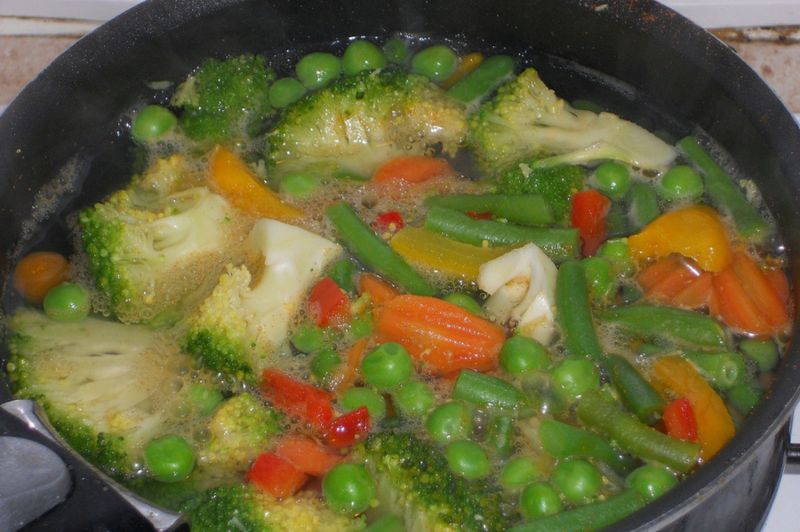
It’s a classic, but not always in a good way. Boiling vegetables in a large pot of water may seem harmless, yet this age-old method often robs your produce of its most valuable nutrients. Water-soluble vitamins like vitamin C and many B vitamins leach out into the water, which is usually discarded down the drain.
The result? Lifeless color, bland flavor, and diminished health benefits. Delicate greens like spinach or vibrant broccoli can lose their appeal quickly. Unless you’re drinking the leftover water as broth, boiling does more harm than good when it comes to preserving veggie integrity.
2. AVOID: Deep Frying

While irresistibly crispy, deep frying is among the worst offenders when it comes to preserving nutrition. Vegetables dunked into hot oil undergo chemical changes that not only diminish antioxidants but also add unwanted fats and calories.
Heat-sensitive nutrients like folate and vitamin C degrade quickly under such intense temperatures. Worse, the high heat can trigger the formation of harmful compounds, especially when oils are reused. What could have been a healthy side ends up heavy, greasy, and stripped of much of its natural goodness. Deep-fried zucchini sticks or onion rings may taste great—but their nutrient profile takes a nosedive.
3. AVOID: Grilling Over High Heat

There’s something undeniably appealing about charred grill marks and smoky flavor. But when it comes to vegetables, high-heat grilling can backfire nutritionally. The intense temperature breaks down important vitamins, particularly vitamin C and some polyphenols. Charring veggies like bell peppers or eggplant can also lead to the formation of potentially harmful compounds like heterocyclic amines (HCAs) and polycyclic aromatic hydrocarbons (PAHs). Plus, veggies often lose moisture fast, turning from juicy to dry in minutes. While grilling can be done smartly, blasting produce over open flames without care often sacrifices both taste and health benefits in the process.
4. AVOID: Over-Roasting

Roasting is often praised for enhancing flavor, but pushing it too far can turn a good thing into a nutritional flop. When vegetables are roasted at high temperatures for long durations, their delicate nutrients start to degrade—especially antioxidants and water-soluble vitamins. Caramelization brings out sweetness, but overdoing it leads to shriveled, dry veggies with charred edges that might taste bitter and offer less nutritional value. Sweet potatoes, Brussels sprouts, and cauliflower are particularly vulnerable to this. Over-roasting doesn’t just mute nutrients; it can also reduce texture and appeal, transforming vibrant veggies into something that’s more punishment than pleasure.
5. AVOID: Microwaving with Excess Water
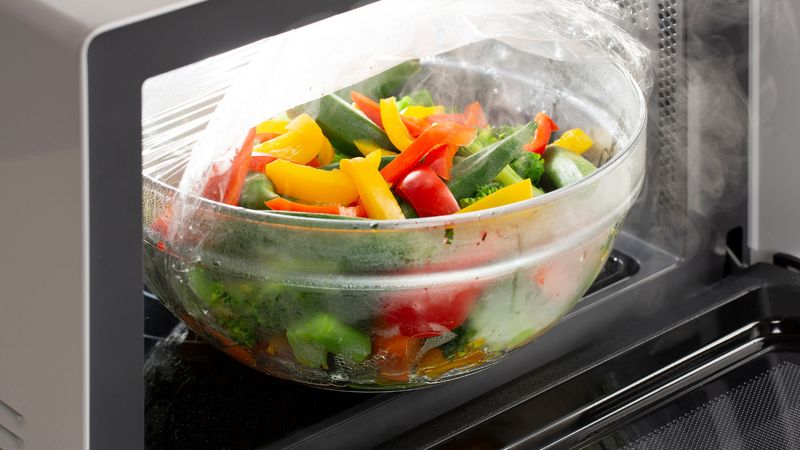
Microwaving is often thought of as a quick, nutrient-friendly cooking method—but it depends on how it’s done. Using too much water or zapping veggies for too long can cause a surprising loss of essential vitamins and minerals. Steam can escape easily in uncovered containers, and water-soluble nutrients like folate, potassium, and vitamin C can degrade quickly under prolonged exposure. The problem isn’t the microwave itself—it’s poor technique. Soggy, overcooked results happen when veggies are drowned in water or left in for double the needed time. With a few tweaks, though, microwaving can be a hero instead of a villain.
6. TRY: Steaming
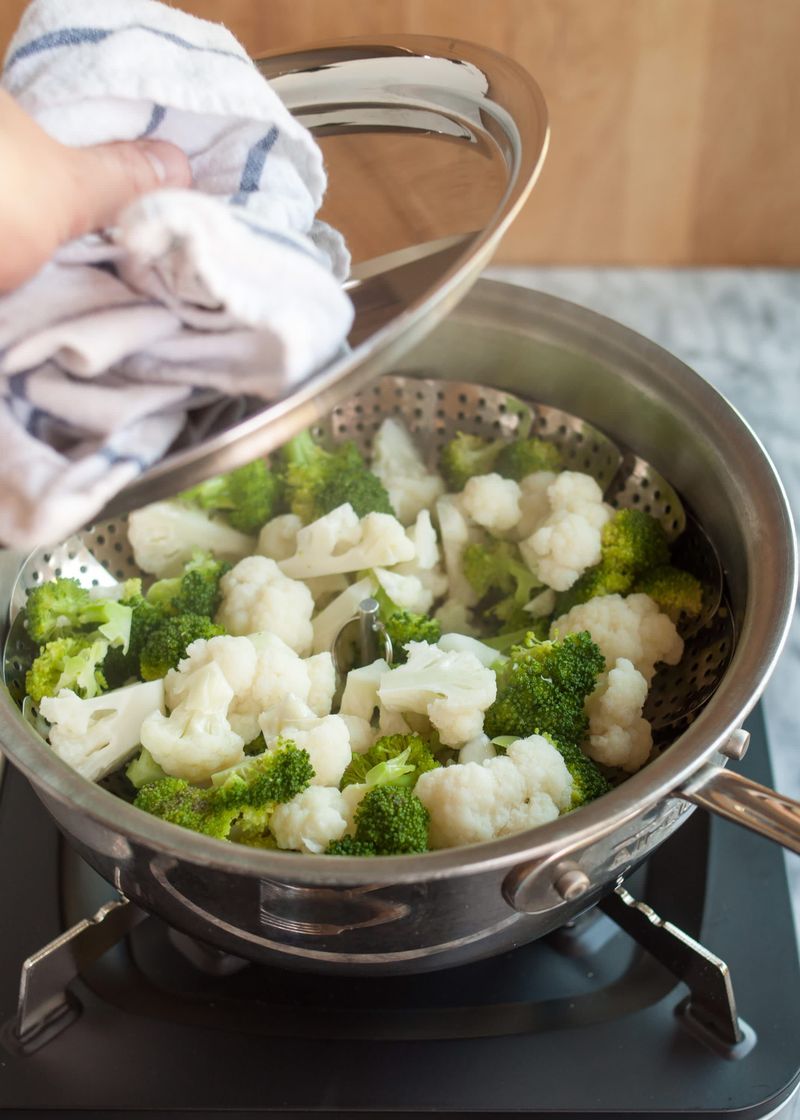
When it comes to keeping veggies vibrant and nutrient-packed, steaming is a top-tier method. Unlike boiling, it suspends produce above water rather than submerging it, preventing nutrient loss. Delicate vitamins like C and folate are better preserved, and the texture stays tender-crisp—not mushy.
Broccoli, green beans, and asparagus especially shine when steamed, holding onto their color, flavor, and nutritional punch. It’s also fast and doesn’t require added fats, making it a great choice for clean eating. Best of all, you don’t need fancy equipment—a simple steamer basket and a pot lid do the trick for everyday veggie magic.
7. TRY: Sautéing
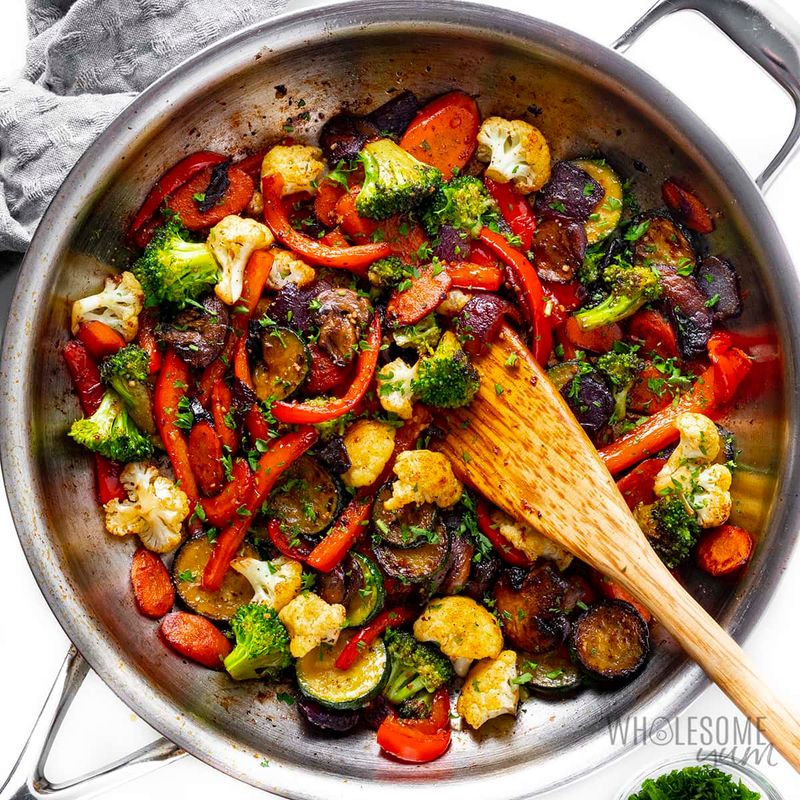
Quick and flavorful, sautéing strikes a beautiful balance between taste and nutrition. Cooking vegetables in a small amount of healthy fat—like olive oil—helps retain water-soluble vitamins while boosting the absorption of fat-soluble ones like vitamins A, D, E, and K. Plus, the short cooking time keeps texture and flavor intact. Colorful veggies like peppers, spinach, or mushrooms benefit greatly from this method. Sautéing also opens the door for easy flavor layering with herbs, garlic, and spices. The key is using moderate heat and not overcooking. It’s a method that respects the veggie and elevates your entire dish.
8. TRY: Blanching
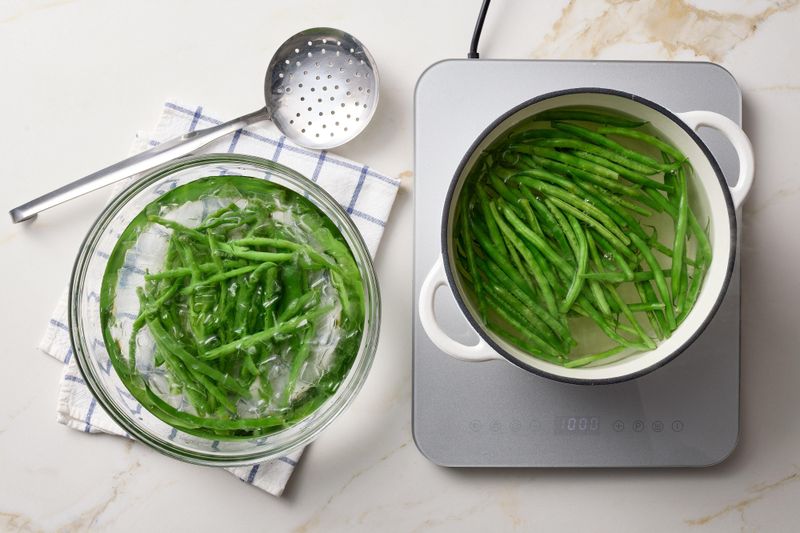
This underappreciated technique deserves more attention. Blanching involves briefly boiling vegetables, then plunging them into ice water to stop the cooking. The result? Brilliant color, crisp texture, and minimized nutrient loss. It’s especially helpful for prepping produce like green beans, snow peas, and carrots for salads or stir-fries. Blanching also helps preserve nutrients when freezing vegetables, locking in their freshness and flavor. Because the exposure to heat is short, there’s little time for vitamins to escape. It’s a gentle, efficient method that offers more control over texture and helps your veggies shine even before they hit the main dish.
9. TRY: Poaching
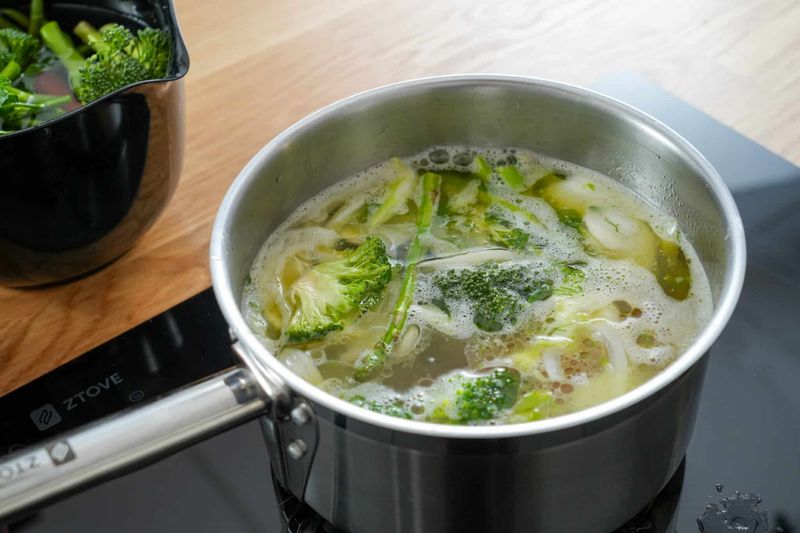
Elegant and gentle, poaching isn’t just for eggs and fish. Veggies like fennel, leeks, or even tomatoes benefit from this low-temp water or broth simmer. Cooking at a lower temperature—typically below boiling—helps protect heat-sensitive nutrients that would otherwise degrade.
Since poaching doesn’t involve fats or high temperatures, there’s little risk of overcooking or creating nutrient-damaging compounds. The subtle infusion of flavor from a seasoned broth can also enhance the vegetable without overpowering it. Poaching is a great technique for those looking to soften veggies delicately while keeping their inner nutrition and structure mostly intact.
10. TRY: Baking (Moderate Temp)
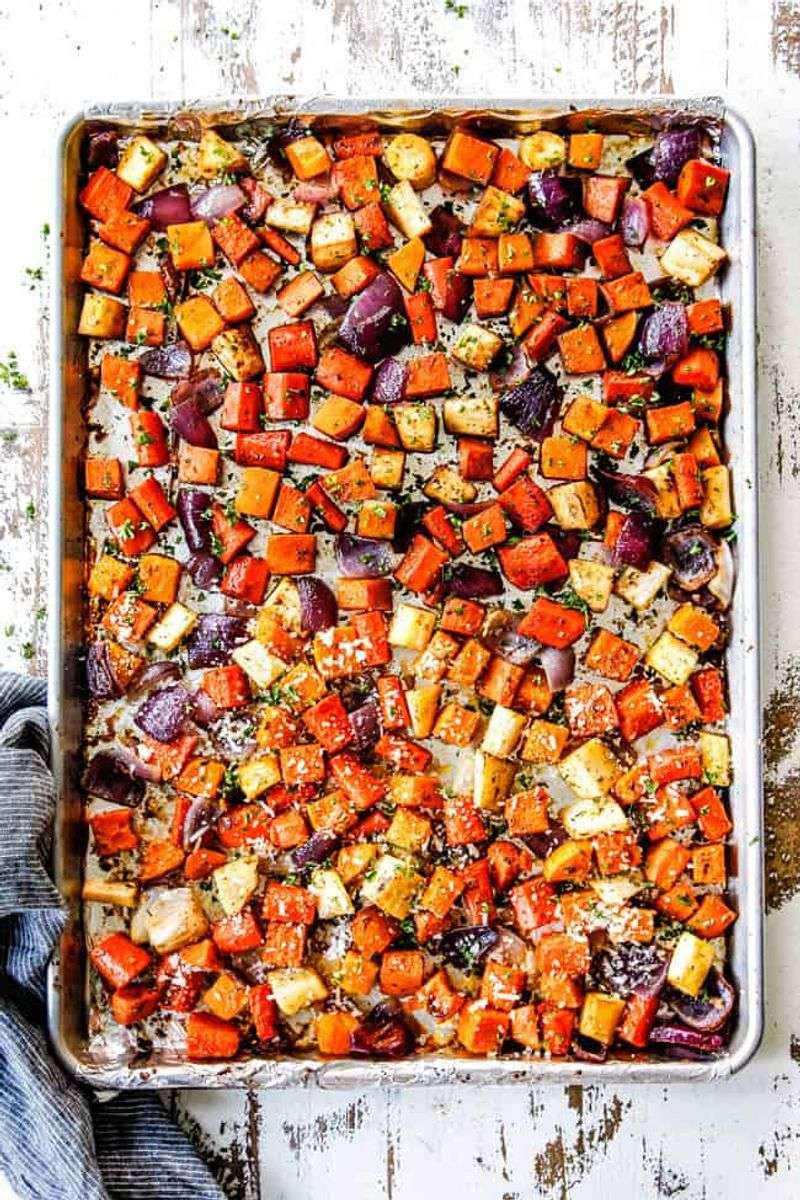
Your oven can be a friend to veggies—if you treat it right. Baking at moderate temperatures, around 350°F, allows vegetables like squash, carrots, or beets to soften slowly and retain more of their nutritional value. Rather than charring or drying out, this approach brings out their natural sweetness, creating caramelized edges without compromising health. It also steers clear of harmful compounds that form under extreme heat. Plus, you only need a light drizzle of oil to get those crave-worthy, golden bites. When done right, baking offers the perfect balance of delicious texture and smart, nutrient-conscious cooking.
Leave a comment